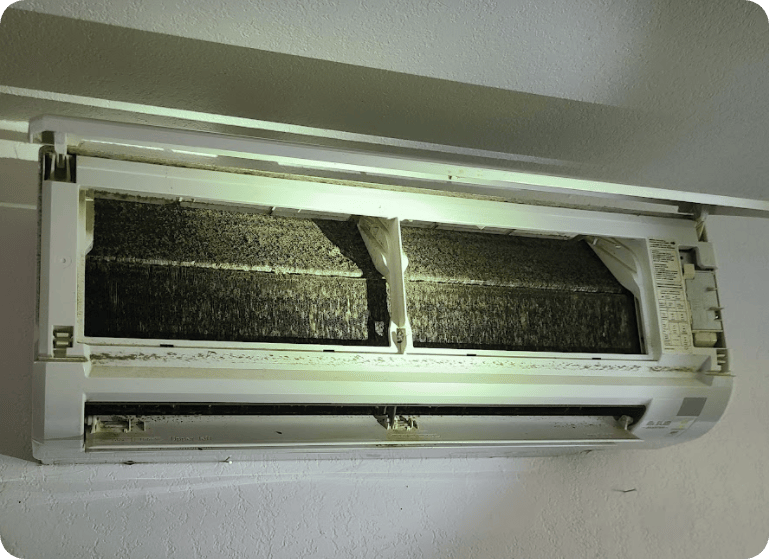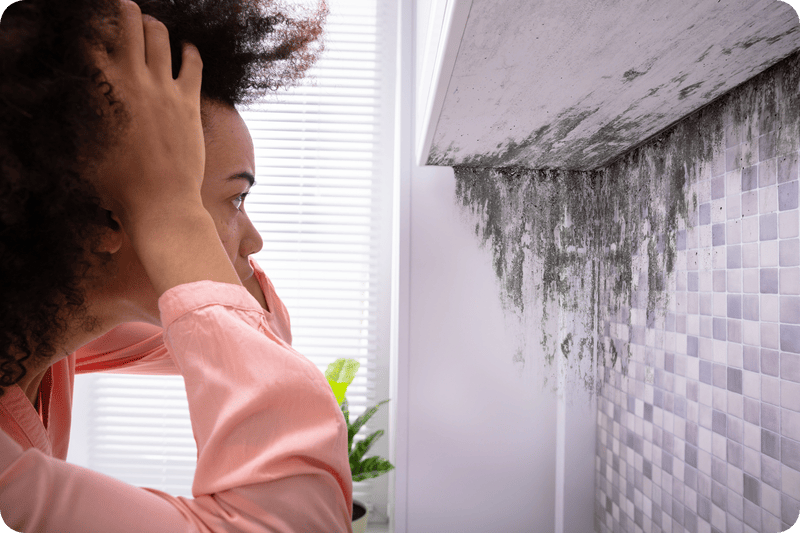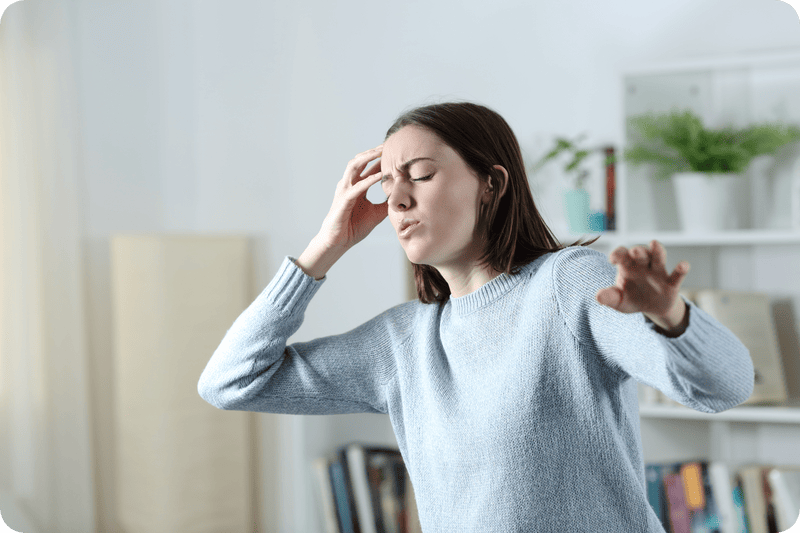Are You Moving? Don’t Take Your Black Mold With You!
Are You Moving? Don’t Take Black Mold With You! (How Mold Travels)

A new home should always mean a new beginning. But, if your past involved mold problems in your house or where you work, that fresh start could be, well, not so fresh.
We all know that mold can grow in your home when the conditions are right (and they often are). But did you know that’s not the only way spores can take root and cause an infestation? It’s also possible for someone to introduce mold to your home from somewhere else. And, that person may even be you.
This article looks at how people can bring in mold problems from one place to another. And, in particular, we’ll cover what to watch for if you’re moving from a place that previously had a mold problem.
Yes, it’s entirely possible for black mold to “follow” you from one place to another! If you’re not careful, of course.
We’ll also cover the signs of a mold problem in your home, from physical symptoms you may experience to the kind of damage you could notice in your house.
Finally, we’ll discuss the all-too-common (but not well-known) problems with mini splits and mold. If your home or business uses one of these ductless heat pump systems, you’ll definitely want to read till the end.
Meanwhile, you can always reach out to us with questions about mold, indoor air quality, or problems with a mini split in your Valley County or Boise Metro home or businesses. You can reach us at (208) 779-5596, and you don’t need to pay for a cleaning or make an appointment just to get more information.
Related: Mold Toxicity And The Signs That Mold Is Making You Sick
Can Black Mold Spread From House To House?
Mold spores are tiny and pervasive, so it’s easy for them to travel from one place to another on surfaces, in boxes, or even on clothes. That makes cross-contamination possible after moving, especially if your previous home had a mold problem.
Different strains of mold grow in slightly different environments. Stachybotrys, for instance, is what people often refer to as black mold. It’s the kind that grows easily on walls and in bathrooms, damp basements, and wet carpets.
Related: How Long Does Mold Remediation Take In Homes And Businesses?
It doesn’t spread through the air nearly as easily as other strains. But, spores will travel and attach to other objects if you disturb a colony (a collection of spores large enough to see).
That can happen by slamming a door near a wall with mold on it. And, if you’re packing, you may kick up spores that cultivated at the back of a bookshelf, in a closet, or other areas you don’t often access or clean.
That increases the chance of it spreading and “following” you to your next home.
Can Someone Bring Mold Into My House?
Mold spores are virtually everywhere, and they can stick to clothes. As a result, it’s possible — and likely — for someone to bring mold into your home. However, that doesn’t mean it will lead to an infestation. In fact, that’s somewhat unlikely.
Spores require the right conditions to cultivate into a colony. That mostly means dark, damp, humid areas, plus “food.” If the spores don’t find those conditions, they won’t grow into a problem.
Controlling humidity and keeping your home clean goes a long way toward preventing mold. If you have a mini split for heating and cooling, some additional risks are involved. But we’ll get to that later.
At any rate, bringing in mold is the bigger problem when you’re moving. In that situation, you may disrupt a colony on your way out. Or take the colony with you if it’s in a box or on the furniture.
Then, it’s easier for those spores, already in a colony, to take root in their new home.
Symptoms Of Mold Exposure And Mold Allergies

Mold allergies and other mold exposure symptoms can be tough to spot because they’re similar to symptoms of other health issues. They run the gamut from light respiratory problems to skin rashes, headaches, nausea, or difficulty concentrating.
For instance, people with a mold allergy react to spores the way people with seasonal allergies react to pollen: Sneezing, coughing, watery eyes, and runny noses.
Related: Excellent Indoor Air Quality At Home Is Crucial For People With Asthma
Some people develop a rash from mold exposure, which can also be caused by chemicals, different fabrics, and plenty of other products or substances.
And all those more severe symptoms — particularly “brain fog,” forgetfulness, or irritability — could stem from depression, neurological issues, stress, or other factors.
So, it’s essential to also look for signs of mold in your home if you’re experiencing these symptoms.
Five Signs Of Black Mold In Your Home
Five common signs of mold growing in our home are:
- General Musty Smell
- Discolored Grout Around Tiles
- Water Damage Spots
- Warped Walls Or Wallpaper
- Bad Smell From Your HVAC System
Remember that mold often grows in out-of-the-way places. So, in some cases, you’re looking for related signs like water damage or warping. The spores can travel through drywall but likely take root inside the wall before you can see it in the room.
Mold And Your Ductless Mini Split
Mini splits, or ductless heating and cooling systems, are common sites for mold colonies. The insides of the air handlers are dark and warm, and they get humid from moisture in the air. Plus, they’re tough to clean entirely without the right equipment.
As a result, black mold and other microbial contaminants that get sucked in with the air take root on the coil and other components. Once that happens, your system spreads them throughout the house when the air blows back out.
Related: How Mold In Ductless Mini Splits Cause Biotoxin Illness
If you’ve had a mini split for more than a year, then it’s time to consider a cleaning. That’s especially so if you notice any of the problems we’ve outlined here — or even general heating and cooling issues.
For instance, here’s a picture of a coil from one of our recent jobs. Part of our process is to stop halfway through the cleaning so the homeowner can see the progress.
In this case, we snapped a picture so you can see how dirty these get and how clean we make them once we’re done:




 Heat pumps require regular maintenance, just like a conventional heating and cooling system. But what does that mean, exactly? And, what difference does it make?
Heat pumps require regular maintenance, just like a conventional heating and cooling system. But what does that mean, exactly? And, what difference does it make? Are you tired all the time? If so, you’re not alone — especially not today.
Are you tired all the time? If so, you’re not alone — especially not today.  Sudden dizziness. Problems focusing or keeping your balance. Nausea. Sweating. Sudden hearing loss. The room feels like it’s spinning around you. Could the culprit be mold? The answer may surprise you.
Sudden dizziness. Problems focusing or keeping your balance. Nausea. Sweating. Sudden hearing loss. The room feels like it’s spinning around you. Could the culprit be mold? The answer may surprise you. Vertigo isn’t a disease itself. Instead, it’s a
Vertigo isn’t a disease itself. Instead, it’s a